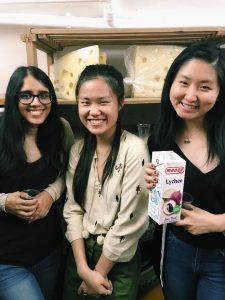
In the last week of the program, we took a trip to the Musee de Fumeur, a museum that displayed smoking devices. We discussed in class how society in France views smoking differently than we do in the United States. I was curious about what contributes to addiction and how it can be overcome. In previous neuroscience classes, we learned that environmental cues associated with smoking contribute to dependency on cigarettes. I found that more research is going into how addiction can be treated effectively. I found a study conducted by Modino et al. (2018) that tested the effects of transcranial direct current stimulation (tDCS) on smoking. Investigators found no difference between active tDCS and a placebo on cigarette consumption, but there was a significant effect of tDCS on craving for cigarettes. Further research would be beneficial to be able to help more people who are addicted to smoking.
References:
Mondino, M., Luck, D., Grot, S., Januel, D., Suaud-Chagny, M., Poulet, E., & Brunelin, J. (2018). Effects of repeated transcranial direct current stimulation on smoking, craving and brain reactivity to smoking cues. Scientific Reports., 8(1), 8724.









